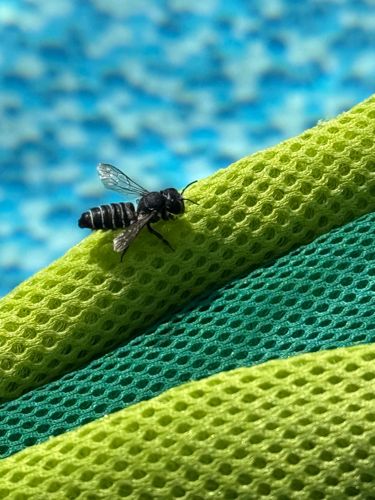Mason Bee (likely a species of Osmia)
Scientific Name: Osmia species (e.g., Osmia lignaria, Osmia cornifrons, etc. - exact species is hard to determine from image alone)
Order & Family: Order: Hymenoptera, Family: Megachilidae
Size: Typically 8-15 mm (0.3 to 0.6 inches) in length, varying by species.

Natural Habitat
Mason bees are found in a variety of habitats where flowering plants and suitable nesting sites (hollow stems, bare wood, or artificial bee houses) are available. This includes gardens, orchards, woodlands, and urban areas.
Diet & Feeding
Adult mason bees feed on nectar. Larvae feed on a pollen and nectar mixture collected by the female bee.
Behavior Patterns
Mason bees are solitary bees, meaning they do not live in colonies like honey bees. Each female builds her own nest, typically in pre-existing holes or tubes. They provision their nests with pollen and nectar for their offspring. They are generally gentle and less aggressive than social bees, only stinging if severely provoked.
Risks & Benefits
Potential risks are minimal; they are not aggressive and rarely sting unless trapped or squeezed. Benefits are significant: they are excellent pollinators for a wide variety of plants, including many fruit trees (apples, cherries, blueberries) and native wildflowers. They are crucial for agricultural and ecological health.
Identified on: 8/13/2025